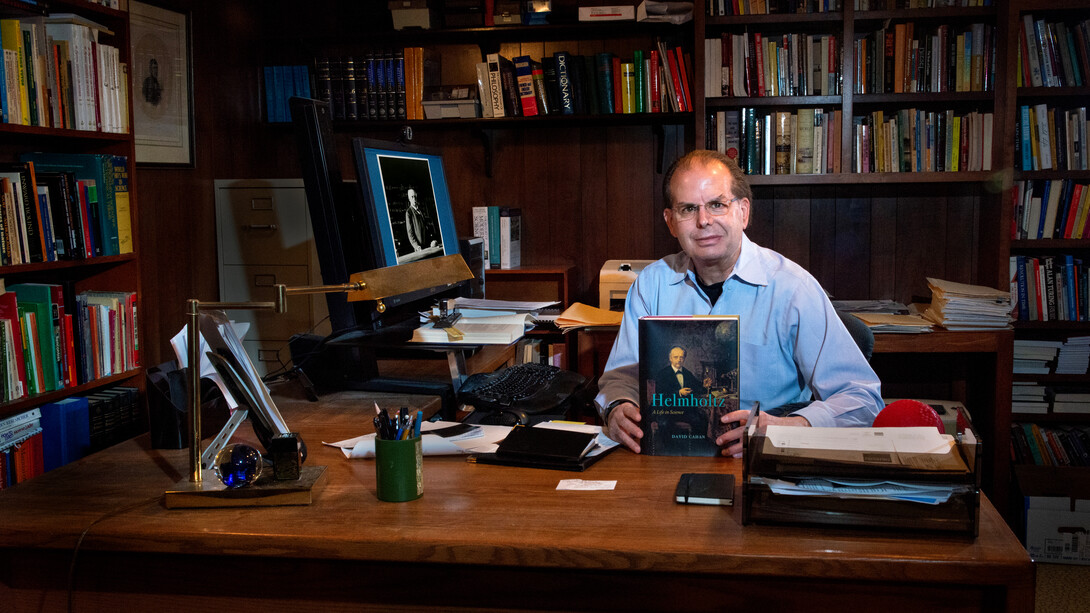
Hermann von Helmholtz was a titan of 19th-century science, but few outside his home country of Germany or contemporary science know his name today.
Many of Helmholtz’s contributions are still significant — from the ophthalmoscope and modern physic’s understanding of the conservation of energy to the foundation of musical acoustics. Physicists, ophthalmologists, physiologists, neuroscientists, psychologists, musicians, and others consider him a foundational figure in their respective disciplines.
Still, some people are more familiar with his students, such as Heinrich Rudolf Hertz and DeWitt Bristol Brace, the pioneer of physics studies at the University of Nebraska-Lincoln.
Nebraska’s David Cahan, a historian of science, has placed the polymath at the forefront again with his new biography, “Helmholtz: A Life in Science.”
Cahan spent more than 25 years researching and writing the book, which contains some 80 pages of endnotes that trace the European and American journeys Cahan took to fully form the landscape of Helmholtz’s life and science.
“Just like his life’s work was an attempt to unite all of the sciences together, and to unite the sciences and the arts together, I tried to unite his whole life, including his scientific endeavors, his interest in mathematics, his family and friendships, his love of the arts,” Cahan, Charles Bessey Professor of History, said.
Cahan, who began studying Helmholtz as a graduate student at Johns Hopkins University and as a lecturer at the University of Chicago before coming to Nebraska in 1982, also endeavored to illustrate Helmholtz’s extraordinary intellectual dexterity.
“He had a great range of knowledge and interests, and he had this absolutely uncanny ability to take an idea from one field of science or mathematics and apply it to another,” Cahan said. “Everyone today is interested in interdisciplinary work, and Helmholtz was himself a walking interdisciplinary center.”
Helmholtz, who counted Albert Einstein, Charles Darwin, Max Planck and Sigmund Freud among his admirers, disappeared from the public consciousness, largely due to the decline of Germany’s stature following World War II. Cahan explored this in the volume, too.
“Until the Nazis came to power in 1933, Germans were the world’s leaders in science, and Helmholtz was the leader of German scientists,” Cahan said. “German science hit an absolute low point, morally and intellectually during the Nazi period and during the war.”
In recent decades, the Helmholtz name has reclaimed icon status in Germany, but Cahan’s “Helmholtz” is the first comprehensive, full-length and critical biography written since 1903. The book has already received praise in Nature and the Wall Street Journal.







